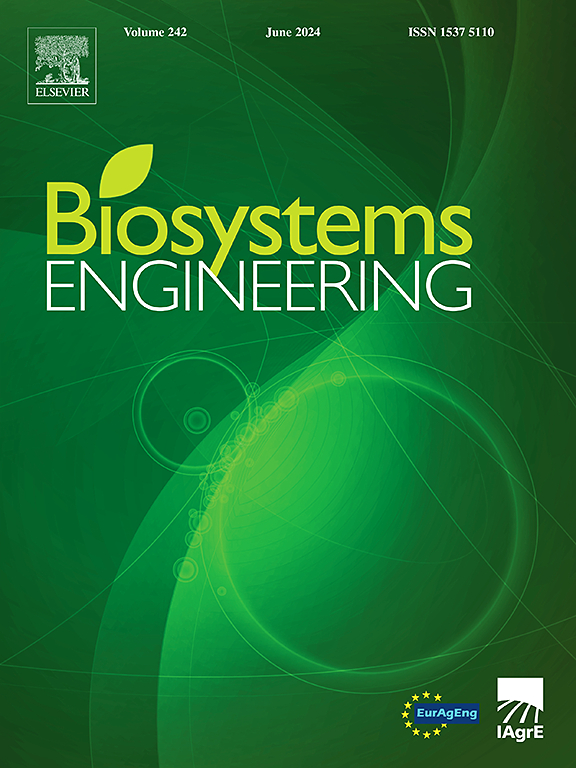Design and test investigation of a 3WZ-600 profiling sprayer for dwarf-dense planting jujube orchard
IF 4.4
1区 农林科学
Q1 AGRICULTURAL ENGINEERING
引用次数: 0
Abstract
Spray application is the primary method of pest management in the dwarf-dense planting jujube orchards, but it offen suffers from off-target drift, poor spray volume uniformity, and low pesticide deposition rates. To address these issues, considering the orchard's planting pattern and the external characteristics of the tree growth, a simplified 3WZ-600 profiling sprayer was designed in this study to accommodate trees of varying heights. In particular, the sprayer's design scheme and relevant parameters were determined through theoretical analysis and numerical simulation. The design focused on the key components necessary for achieving effective profiling spray application, particularly the profiling spray bars. To ensure their stability and safety during operation, static and vibration modal analyses of their profiling posture were conducted using ANSYS software. Subsequently, CFD numerical simulation was employed to simulate the spraying process and study the effects of three different spray distances on droplet movement characteristics, deposition distribution characteristics, and uniformity. The simulation predicted an effective spray range of 400–800 mm. Finally, to validate these simulation results, the profiling sprayer was used to conduct field experiments to explore the influence of spray parameters on operation quality. Optimal working parameters were identified as a speed of 1 m s−1, a nozzle pressure of 0.96 MPa, and a spray distance of 400 mm. The test results showed that, under these conditions, the average pesticide adhesion rate was 78.97%, and the deposition coefficient of variation was 21.42%.
求助全文
约1分钟内获得全文
求助全文
来源期刊

Biosystems Engineering
农林科学-农业工程
CiteScore
10.60
自引率
7.80%
发文量
239
审稿时长
53 days
期刊介绍:
Biosystems Engineering publishes research in engineering and the physical sciences that represent advances in understanding or modelling of the performance of biological systems for sustainable developments in land use and the environment, agriculture and amenity, bioproduction processes and the food chain. The subject matter of the journal reflects the wide range and interdisciplinary nature of research in engineering for biological systems.
 求助内容:
求助内容: 应助结果提醒方式:
应助结果提醒方式:


